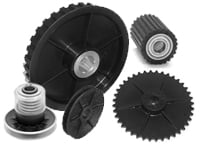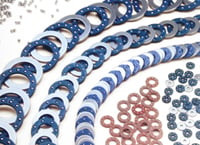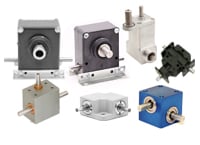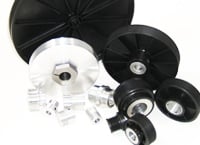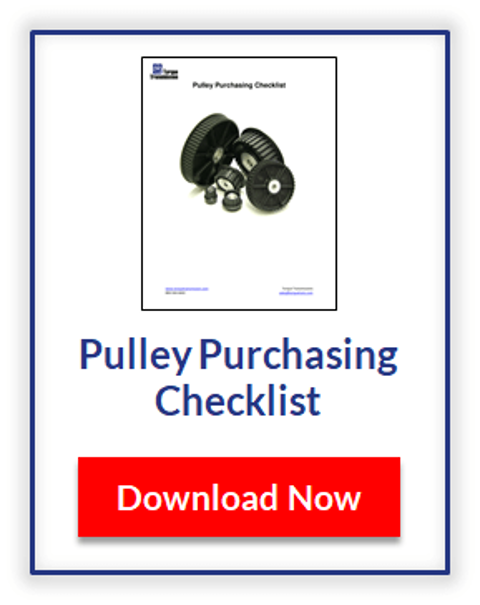 How do you know if a V-belt pulley is the right choice for your project? Designed to be high quality and rugged, our pulleys are engineered for industries where high strength to weight ratios and quiet operation are required.
How do you know if a V-belt pulley is the right choice for your project? Designed to be high quality and rugged, our pulleys are engineered for industries where high strength to weight ratios and quiet operation are required.
Here are some considerations when deciding if a v-belt drive is right for your project:
- Determine the ratio of your drive application
- Review service factors
- How much power do you need to transmit and at what speed?
- V-belt design horsepower
- Verify if dynamic balancing is needed for each sheave
- Find the number of belts required by dividing the design horsepower by the belt/HP
- V-belts may slip or creep so shouldn’t be applied when synchronous speeds are required
- V-belts can be manufactured in any length within a fairly wide range
|
Belt Style |
Denomination/Top Width |
|---|---|
|
Conventional: most common v-belt style; used in many transmission applications |
A: .5"
B: .625"
C: .875"
D: 1.25"
E: 1.5"
|
|
Fractional Horsepower: a v-belt for light loads and small engines |
2L: .25"
3L: .375"
4L: .5"
5L: .65"
|
|
Narrow: as strong as conventional v-belts, but with smaller widths |
3V: .375"
5V: .625"
8V: 1.0"
|
|
Hexagonal: a v-belt with a hexagonal cross-section which can gain traction on pulleys placed inside or outside the belt drive. |
AA: .5"
BB: .625"
CC: .875"
|
At Torque Transmission we specialize in manufacturing pulleys that work with the 2L size V-belts for fractional horsepower. Our pulleys use a combination of a molded glass reinforced nylon pulley with a machined aluminum hub for strength. We also offer custom v-belt pulleys for applications where “off the shelf” pulleys aren’t suitable.
Contact us with your specific v-belt pulley requirements for an individual evaluation.

